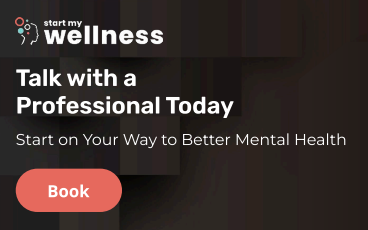In today’s fast-paced world, feeling overwhelmed has become an all too common phenomenon. Emotional exhaustion, a state where you feel drained and unable to cope, is on the rise. It’s more than just being tired after a long day — it’s a deeper issue that affects your mental health, your ability to get things done, and your overall happiness.
With constant demands from work, family, and even technology, many people are struggling to keep up. This isn’t just a personal problem; it’s a growing concern that impacts how we live.
In our article, we’ll explore practical self-care tactics and stress management techniques to help you prevent and recover from emotional exhaustion. Whether you’re feeling the weight of it now or want to stay ahead, our tips can guide you toward a balanced life.
What is Emotional Exhaustion and How Does It Affect You?
Emotional exhaustion is more than just feeling tired after a busy week. It’s a chronic state of being drained, often caused by long periods of stress. Unlike fatigue, which a good night’s sleep can fix, this kind of exhaustion sticks around. Emotional exhaustion is a condition where you feel completely overwhelmed and unable to keep going.
The link between prolonged stress and burnout is clear. When you’re constantly under pressure — whether from work deadlines or personal challenges — your mind and body take a hit, making recovery from burnout a necessity.
Symptoms can include brain fog, where thinking feels like wading through mud, a lack of motivation to tackle even small tasks, irritability with those around you, and even physical tiredness that rest doesn’t cure. Over time, these signs can pile up. It can leave you feeling stuck and disconnected from the things you once enjoyed.
Common Causes of Emotional Fatigue
So, what pushes us into this state of fatigue? Several everyday triggers can add up. Workplace stress is a big one — think endless emails, tight deadlines, or a demanding boss. Then there are personal responsibilities, like caring for family or juggling bills. This can feel like a never-ending list. Another key factor is a lack of work-life balance. When work takes over and there’s no time for rest or fun, exhaustion creeps in fast.
Constant pressure without breaks is a recipe for burnout. It’s like running a marathon with no finish line when you don’t give yourself time to recover. Whether it’s saying “yes” to too many tasks or not setting aside moments to recharge, this imbalance wears you down. Recognizing these causes is the first step to stopping the cycle and finding relief.
Signs You Might Be Experiencing Burnout
How do you know if you’re heading toward burnout? Here’s a quick checklist of signs to watch for:
- Physical. Feeling tired all the time, headaches, or trouble sleeping.
- Emotional. Mood swings, feeling hopeless, or crying more easily than usual.
- Behavioral. Pulling away from friends, skipping tasks, or relying on unhealthy habits like overeating.
These warning signs are your body and mind waving a red flag. If you ignore them, they can grow into bigger mental health problems, like anxiety or depression. Paying attention now can save you a lot of trouble later — so don’t brush them off as “just stress.”
Practical Stress Management Strategies to Reduce Emotional Fatigue
Luckily, there are ways to fight back against emotional exhaustion with solid stress management techniques. Start with deep breathing: take slow, deep breaths for a few minutes to calm your mind. Progressive muscle relaxation is another winner — tense and release each muscle group to melt away tension. Time management helps too. Break your day into chunks so you’re not overwhelmed by a giant to-do list.
Here are some actionable tips for a healthier routine:
- Set small, doable goals each day to feel accomplished.
- Take short breaks every hour to step away and reset.
- Say “no” when you need to — overloading yourself fuels fatigue.
These steps don’t require a big overhaul — just small tweaks to ease the pressure. Over time, they can lighten the load and help you feel more in control.
Mindfulness Techniques for Burnout Recovery

When you’re deep in burnout, mindfulness techniques can be a lifeline for burnout recovery. Mindfulness is all about staying present — focusing on the present moment instead of worrying about yesterday or tomorrow. Practices like meditation, journaling, and self-reflection can pull you out of that overwhelmed headspace.
Try this simple mindfulness exercise: Sit quietly for five minutes, close your eyes, and focus on your breath. If your mind wanders, gently bring it back — no judgment. Journaling is great too — spend ten minutes writing down your thoughts to clear the clutter. Self-reflection can be as easy as asking yourself, “What do I need right now?” and listening to the answer.
To make self-care strategies part of your day:
- Start with just five minutes in the morning.
- Use a notebook or app to jot down quick thoughts.
- Pause during stressful moments to breathe and refocus.
These habits don’t take much time but can gradually rebuild your energy and calm your mind.
Self-Care Strategies to Maintain a Healthy Work-Life Balance
Taking care of yourself isn’t a luxury — it’s a must. Self-care tactics are key to keeping a healthy work-life balance and avoiding exhaustion. Think of it like recharging your battery with things you enjoy: a brisk walk, a hobby like painting, or even a quiet evening with a book. Exercise boosts your mood, hobbies give your brain a break, and setting boundaries — like turning off work emails after 6 p.m. — protects your personal time.
Here’s how to build a sustainable balance:
- Schedule “me time” like it’s a meeting — non-negotiable.
- Talk to your boss or family about what you can handle.
- Mix fun into your week, not just work and chores.
Prioritizing yourself might feel selfish at first, but it’s the foundation for staying strong. When you’re rested and happy, you’re better at everything — work, relationships, life. Start small, and watch how these changes add up to a lighter, more balanced you.
Recognizing emotional fatigue early and using these tools is essential. By focusing on stress management, mindfulness techniques, and self-care tactics, you can protect your mental health and reclaim your energy. Remember, it’s not about perfection; it’s about progress. Take one step today, and you’ll be on your way to a healthier, happier you.




